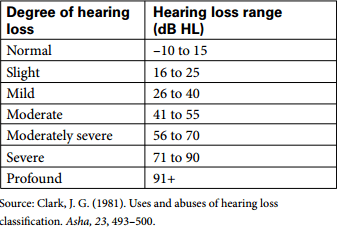Type And Degree
Type & Degree
Results of the audiometric evaluation are plotted on a chart called an audiogram. Loudness is plotted from top to bottom. Frequency, from low to high, is plotted from left to right.
The three main types of hearing loss are as follows:
Conductive
This type of hearing loss means that sound waves are not able to travel through the outer and/or middle ear but the inner ear and auditory nerve are functioning normally.
Sensorineural
This type of hearing loss means the sound waves are travelling through the outer and middle ear but the inner ear and/or auditory nerve has damage.Mixed: This type of hearing loss is a combination of a conductive and a sensorineural hearing loss.
Mixed
This type of hearing loss is a combination of a conductive and a sensorineural hearing loss.
Tinnitus
Tinnitus is an abnormal perception of a sound which is reported by patients that is unrelated to an external source of stimulation. Tinnitus is a very common disorder.Tinnitus may originate from various lesions and from different sites. The auditory system involves highly complicated inner ear structures, many afferent and efferent nerve pathways and a great amount of nuclei that form a complex meshwork. Tinnitus is a symptom or side effect of other health issues. It is often associated with hearing loss. Having amplification (hearing aids) can sometimes "cure" tinnitus. Most hearing aids also have a tinnitus-masker built in, which can alleviate the suffering caused by tinnitus, if amplification does not eliminate it.

